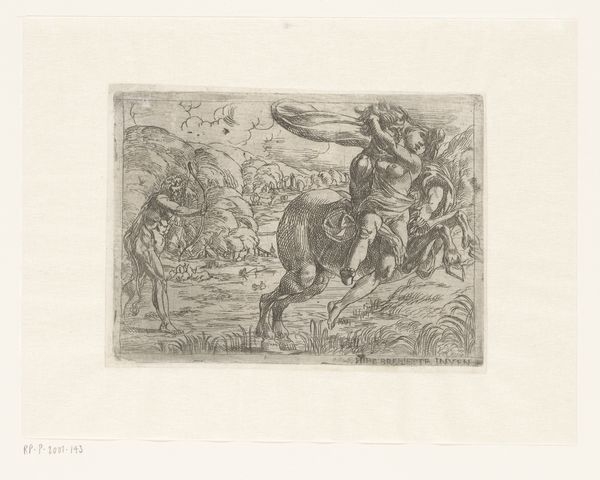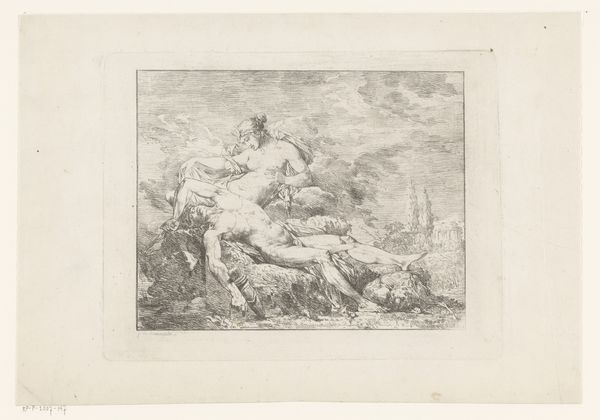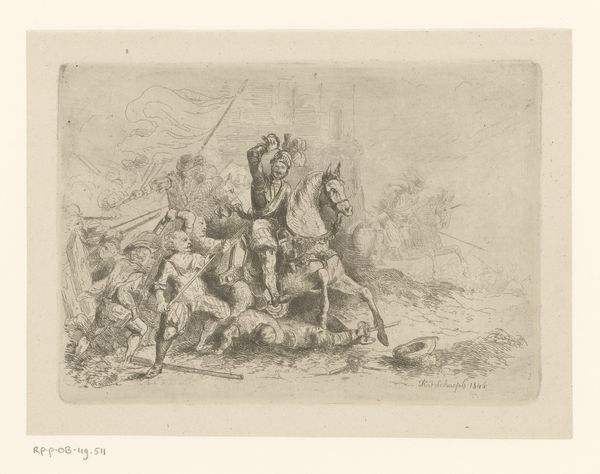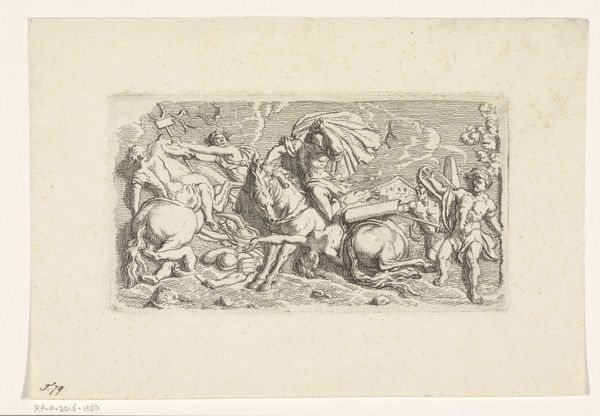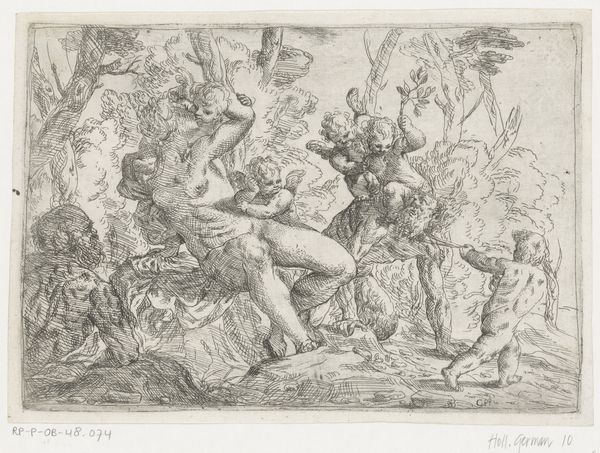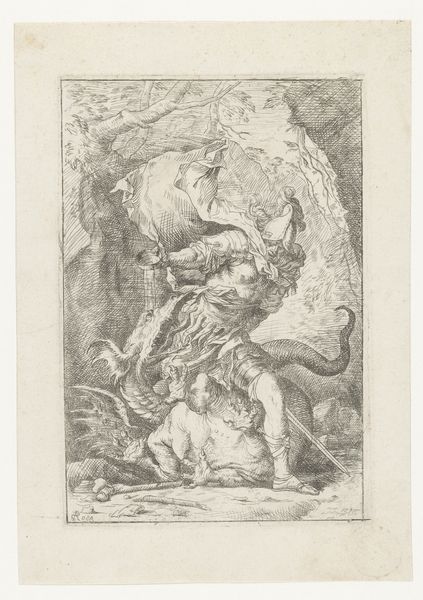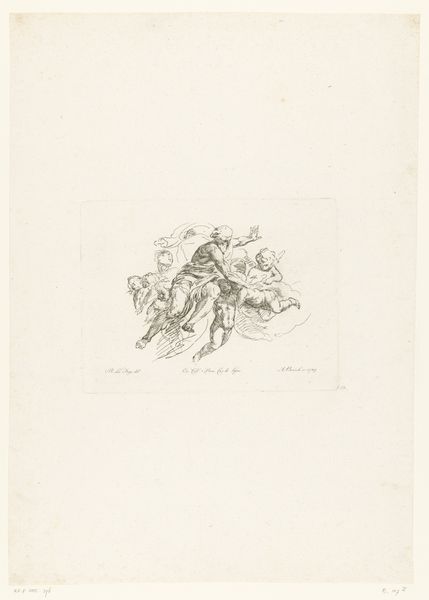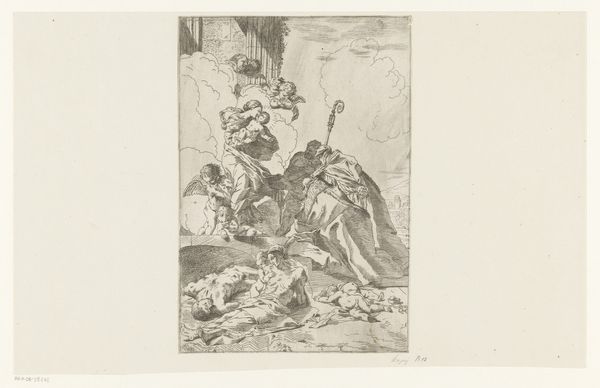
print, engraving
#
baroque
# print
#
old engraving style
#
figuration
#
history-painting
#
engraving
Dimensions: height 85 mm, width 101 mm
Copyright: Rijks Museum: Open Domain
Curator: Today, we’re looking at "Neptunus op zijn strijdwagen," or Neptune on his Chariot, an engraving made by Nicolas Henin sometime between 1701 and 1724. Editor: It’s immediately striking how dynamic it is for a print! The way Henin captured movement using such precise lines, it's almost dizzying. Curator: Indeed. Baroque prints often served to disseminate imagery. This would have been accessible to a wider audience beyond those who could afford paintings. We must consider the social impact and the messaging a piece like this would carry to different viewers. Editor: Right, but consider the physical process, too! The skilled labor of the engraver to create these lines by hand on a metal plate, reversing the image. And then think of the paper – likely handmade as well, each print an individual act of labor and skill. Curator: Certainly. And these depictions of classical gods carried symbolic weight in the early 18th century, reflecting power and authority. Neptune, God of the sea, represents dominance. It's a carefully constructed visual language meant to resonate with certain societal values. Editor: I agree, it does, but the physicality still interests me the most! To think about how it’s essentially mass-produced through that singular engraved plate. How each impression made from it democratizes art in a way – a reusable tool of cultural diffusion! Curator: The printmaking context definitely opens that avenue of interpretation. Thanks for pointing that out. Editor: My pleasure! I leave this discussion seeing that piece through new, more nuanced perspectives. Curator: Agreed! Looking beyond the deity figure portrayed and diving into print media and labor has definitely given new depths to my considerations as well.
Comments
No comments
Be the first to comment and join the conversation on the ultimate creative platform.
